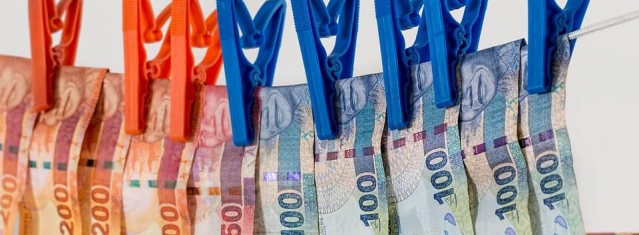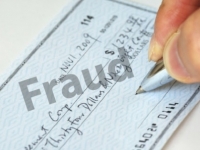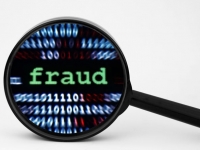Business
The Illegal Use Of Banks.
Who Are The Real Culprits?

USPA NEWS -
Banks are often used for conducting illegal activities, and such crimes fall under the category of bank fraud. Any crime which is done internally with some officials involved is known as bank fraud. These frauds can be of many types. Bank frauds involve schemes to dodge the rules and regulations of the bank and the government system as opposed to bank robbery and theft.
Banking fraud is a crime. Financial criminals are arrested and sentenced to serve a specific period in jail. Bank frauds and other financial crimes are termed as white-collar crimes and are punishable by law. Bank frauds are of various types and the culprits and victims vary accordingly.
Stolen cheques are the first type of banking fraud that is most commonly committed. Scammers gain access to banking facilities like mailrooms, offices of a tax authority, post offices and corporate payrolls where cheques are processed in large numbers. Fake bank accounts are opened under the names and cheques are deposited. The funds are withdrawn without authorization. Forgers also fake signatures and get an illegal access to funds.
Stolen cheques are the first type of banking fraud that is most commonly committed. Scammers gain access to banking facilities like mailrooms, offices of a tax authority, post offices and corporate payrolls where cheques are processed in large numbers. Fake bank accounts are opened under the names and cheques are deposited. The funds are withdrawn without authorization. Forgers also fake signatures and get an illegal access to funds.
Cheque knitting is the process of duplicating a cheque for illegal withdrawal of funds. The money from a cheque is counted twice. When a cheque is deposited at a bank, the amount is made available in both the deposited cheque and the bank account from where it should be withdrawn. The floating time is the processing time where the amount is made ready to be withdrawn from the destination bank. During this time, the funds can be withdrawn and it is termed as fraud since it has not yet been officially cleared by the bank.
Forgery and altered cheques is another way of bank frauds. The amount written on the cheque is simply altered and an amount of $100.00 can be changed to $10,000.00. Bigger amounts are subject to investigations when it comes to banking frauds. Fraudsters try to forge the depositor´s signature on a blank cheque instead of making changes to the original checks. The scammers also print their own cheques and withdraw the amounts from the owner´s accounts. It takes time for banks to realize that the cheque was a fraud.
When it comes to accounting frauds, companies use some accounting tactics to sow their debt and losses as profits. This is done in an attempt to get loans and obtain money as a final attempt to save the company. Cooking the financial books often helps companies in delaying the collapse of an unprofitable business. Banks then ultimately provide loans only to find out later that the pay back is difficult.
The uninsured deposits made to banks which hold the same namesake as a legitimate bank often results in frauds. The funds are uninsured, so if lost, there is no hope of any recovery. It is advisable to always ensure that a bank is licensed before making any deposit. Often long distance transactions get lost in this kind of fraud.
Demand draft is another type of banking frauds that involves one or two bank officials. Some corrupt employees will remove a few demand draft leaves from stock and write them like a regular demand draft. They use their advantage of being in the bank and punch in the codes of the demand draft. This kind of fraud takes about 6 months to discover by the head office, by which time, the money is already gone.
The uninsured deposits made to banks which hold the same namesake as a legitimate bank often results in frauds. The funds are uninsured, so if lost, there is no hope of any recovery. It is advisable to always ensure that a bank is licensed before making any deposit. Often long distance transactions get lost in this kind of fraud.
Demand draft is another type of banking frauds that involves one or two bank officials. Some corrupt employees will remove a few demand draft leaves from stock and write them like a regular demand draft. They use their advantage of being in the bank and punch in the codes of the demand draft. This kind of fraud takes about 6 months to discover by the head office, by which time, the money is already gone.
Trading is another floor where banking frauds are very common. The lax controls of a company can destroy the company´s future at the hands of a trader. Rouge traders start to make rash decisions once losses start to pile up. The trader often plays safe but a few wrong decisions can cost the company a huge loss and consequently, cost them their job. Incidents of traders´ losses and companies going bankrupt at the hands of their appointed traders have been happening since centuries. Famous cases like Nick Leeson of Barings Bank, Bruno Iksil of JPMorgan Chase, Yasuo Hamanaka of Sumitomo Corporation and Daiwa Bank of Toshihide Iguchi are known to all.
Fraudulent loans often involve a corrupt employee. Loans care provided under the name of mortgage funds and the amount sanctioned then disappears. The “borrower“ can also be a fake identity who simply does not exist in the first place. Mortgage frauds are very common since it involves larger amount of funds to be given out with longer periods of return. A loan is also used in the heading to hide a large amount of theft from the bank.
Loan applications are also forged with false information like the wrong financial stability. The information given in the application is shown as “ideal“ to make the applicant eligible for the loan. The actual credit history is hidden and false information provided. This increases the chances of loan approval and once that happens, the “borrower“ disappears with the loan money.
Wire transfer fund method is often used by criminals for money laundering purposes. The money is sent to a foreign distant land through SWIFT banking services. Although banks have put checks and balances in place, scammers can still forge ways out of the process and request for funds to be drawn.
This is a high risk fraud activity when dealing with banks and financial institutions that are uninsured. The risks increase when dealing with offshore companies and transferring money to foreign countries. The greed of culprits is never ending; it´s the victims of financial losses who need the help from authorities and agencies.
This is a high risk fraud activity when dealing with banks and financial institutions that are uninsured. The risks increase when dealing with offshore companies and transferring money to foreign countries. The greed of culprits is never ending; it´s the victims of financial losses who need the help from authorities and agencies.
Liability for this article lies with the author, who also holds the copyright. Editorial content from USPA may be quoted on other websites as long as the quote comprises no more than 5% of the entire text, is marked as such and the source is named (via hyperlink).







